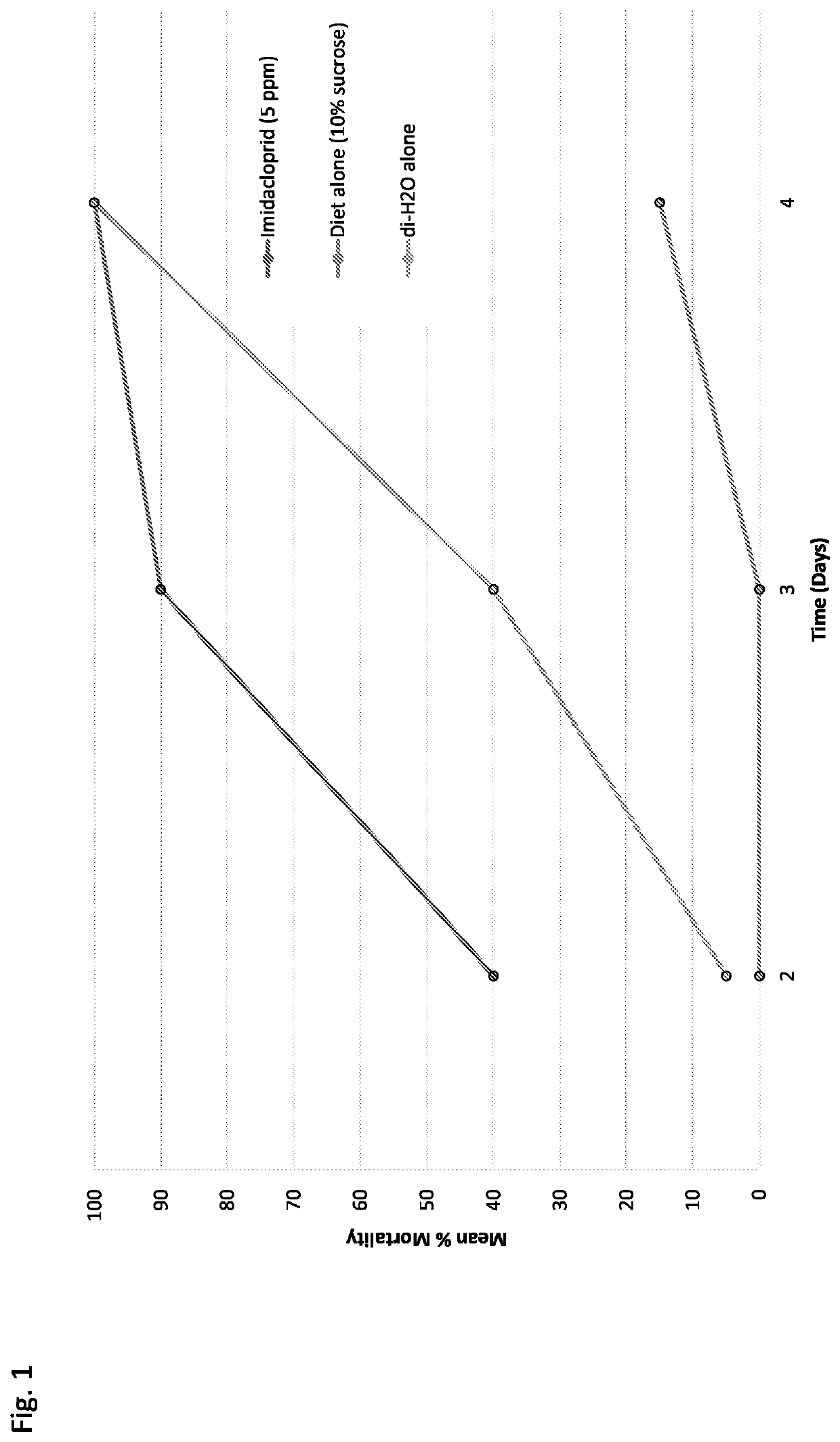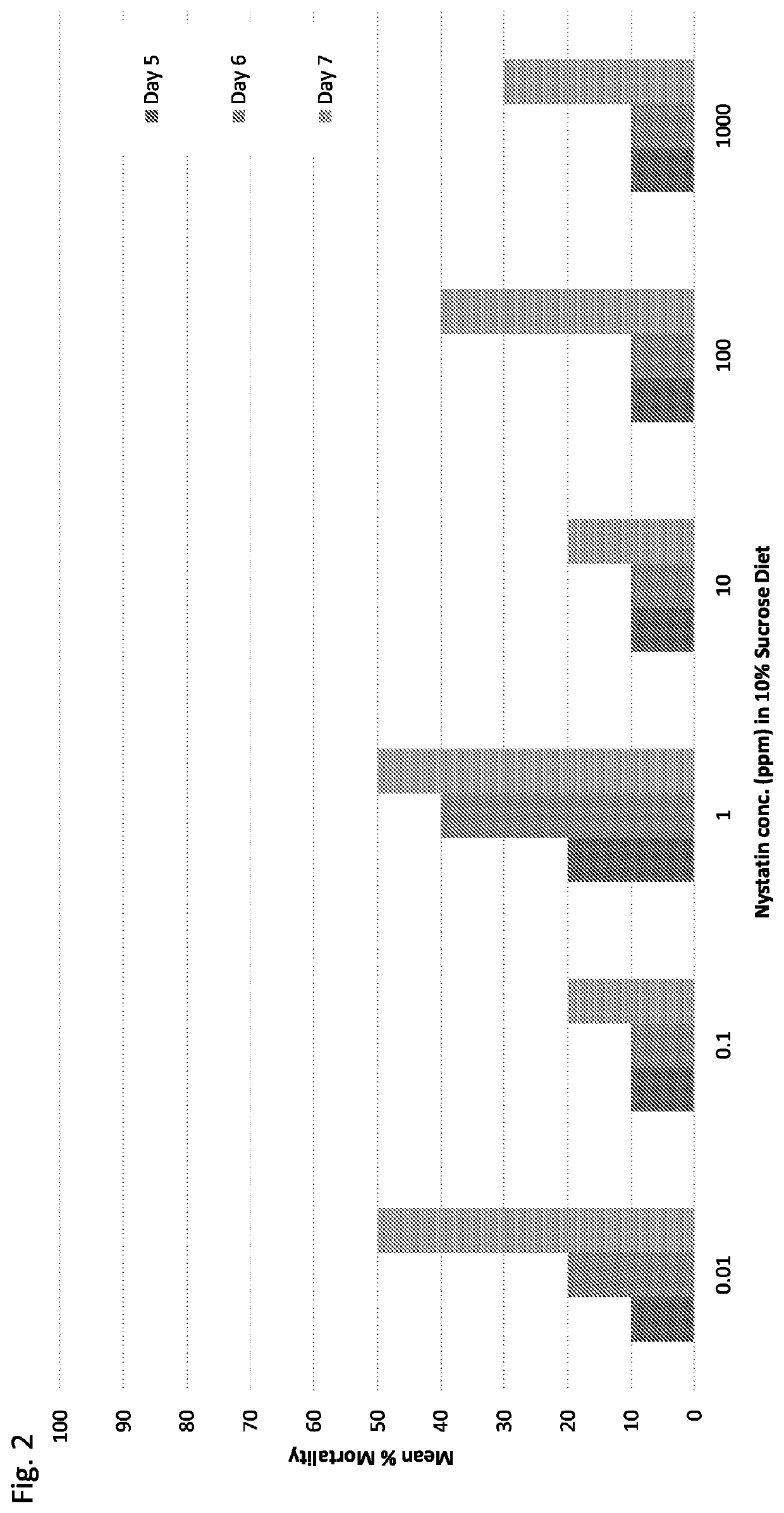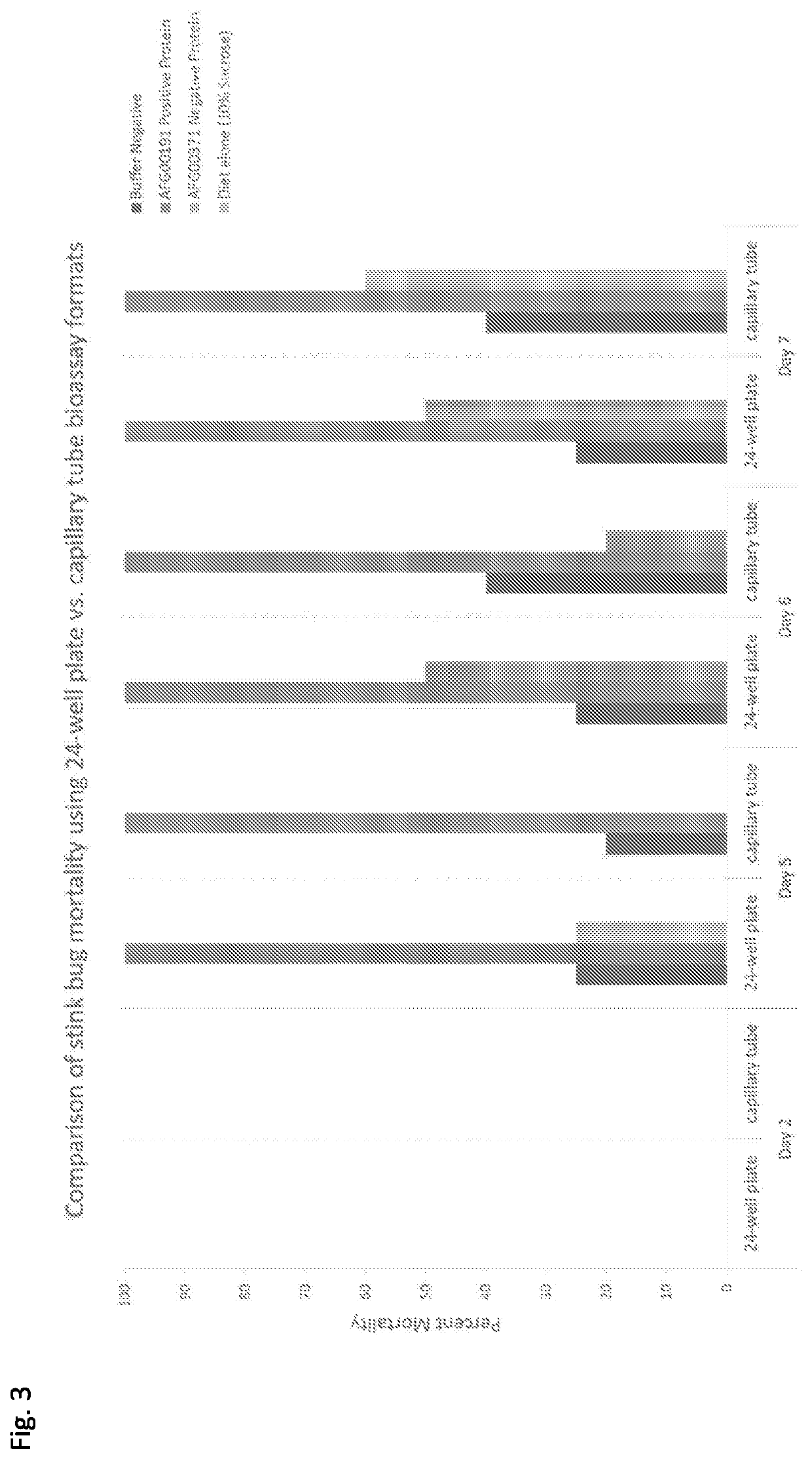Methods and compositions for feeding piercing and sucking insects
a technology of insects and compositions, applied in the field of insect resistance and pest management, can solve the problems of insect bites or stings, loss of world agricultural crops, injury and even death of insects
- Summary
- Abstract
- Description
- Claims
- Application Information
AI Technical Summary
Benefits of technology
Problems solved by technology
Method used
Image
Examples
example 1
Southern Green Stink Bug Feeding Assay
[0069]The insect bioassay was performed with two replicates of five, 2nd instar Southern green stink bug (SGSB) nymphs per treatment. The bioassay unit is comprised of a filter-paper lined Petri dish that contains two capillary tubes filled with protein or microbe test substances in a liquid insect diet (10% sucrose in water). Capillary tubes (Globe Scientific Inc. Plastic microhematocrit capillary tube, plain, blue tip) were cut in half using a razor blade so that their final lengths were approximately 37.5 mm each. Four pinholes, approx. 8-9 mm apart, were added along one side of each capillary tube to provide locations for insects to feed using a teasing needle (BioQuip teasing needle, straight tip). 25 ul of each protein or microbe sample were pipetted into each capillary tube. The ends of each tube were then sealed with wax or a cap. Two capillary tubes were placed with their holes facing upward into a 60×15 mm Petri dish containing a filte...
example 2
Lygus Bug Feeding Assay
[0070]The lygus bioassay was run with four replicates of five, 3rd instar Lygus bug nymphs per treatment. The bioassay unit contained a filter-paper lined Petri dish that contains three capillary tubes filled with protein or microbe test substances in a liquid insect diet (10% sucrose+amino acids in water). Bioassays were run using the same format as in Example 1 with the following modifications: Bioassays were scored for mortality on days 3, 5, and 7-post introduction of nymphs into bioassay units. Petri dishes were stored in a controlled environmental chamber at 25° C. and >75% relative humidity with a 16:8 day:dark cycle.
TABLE 2Mean (±1 SEM) percent mortality of third instar nymphal Western tarnished plant bugs, (Lygus hesperus) provided protein treatments or a diet only control in capillary tubes. (n = 6 replicates of 5 Lygus bugs each per treatment and the diet control)Mean % mortalityTreatment (ppm)Day 3Day 5Day 7Positive protein43.3 ± 6.193.3 ± 4.2 100 ...
PUM
 Login to View More
Login to View More Abstract
Description
Claims
Application Information
 Login to View More
Login to View More - R&D
- Intellectual Property
- Life Sciences
- Materials
- Tech Scout
- Unparalleled Data Quality
- Higher Quality Content
- 60% Fewer Hallucinations
Browse by: Latest US Patents, China's latest patents, Technical Efficacy Thesaurus, Application Domain, Technology Topic, Popular Technical Reports.
© 2025 PatSnap. All rights reserved.Legal|Privacy policy|Modern Slavery Act Transparency Statement|Sitemap|About US| Contact US: help@patsnap.com



